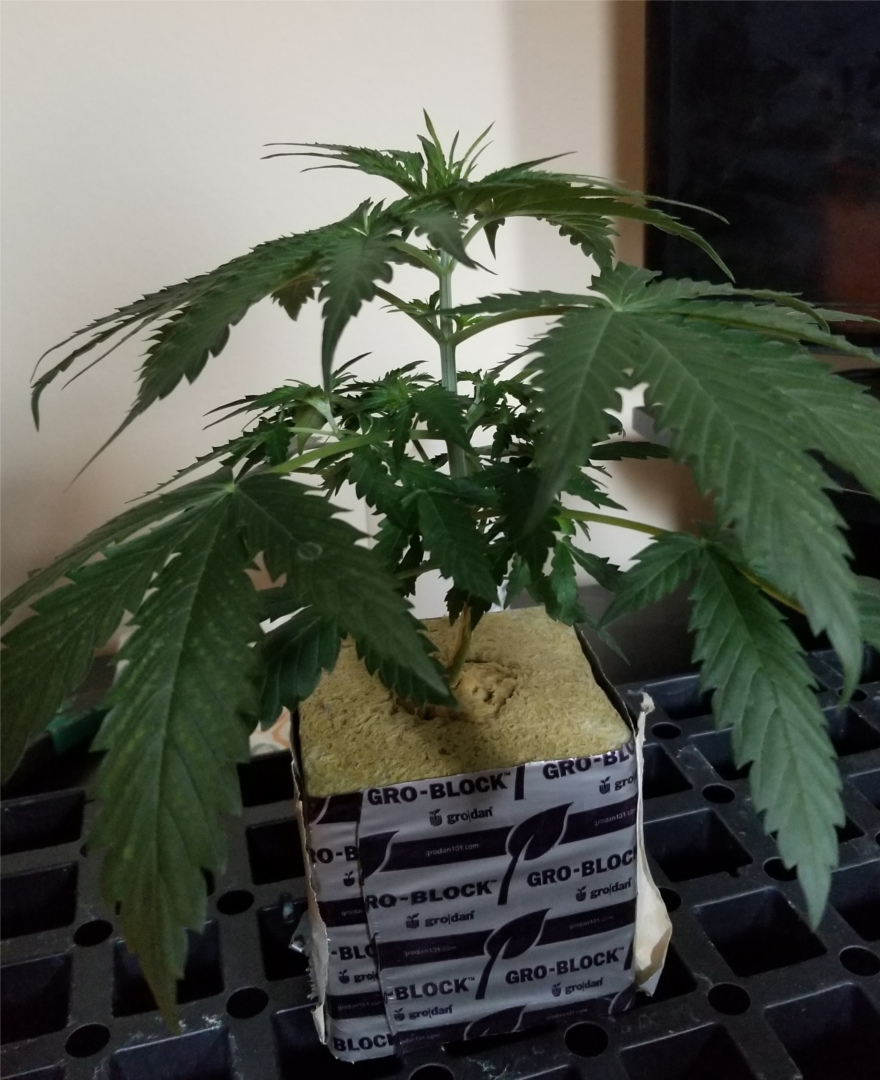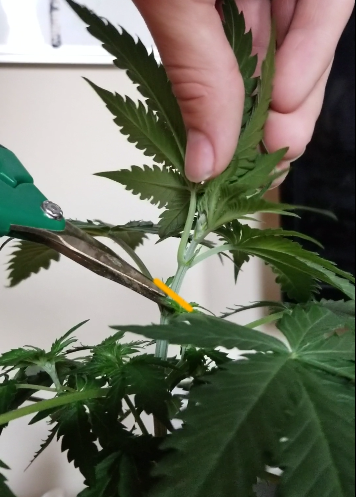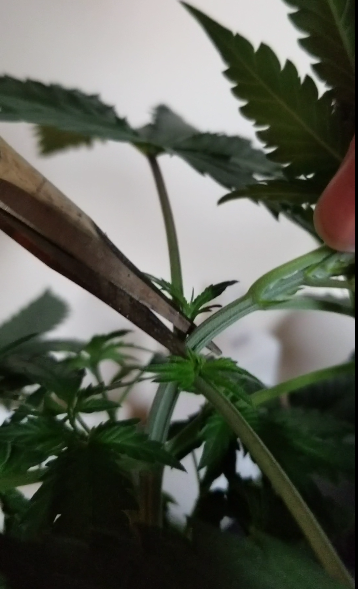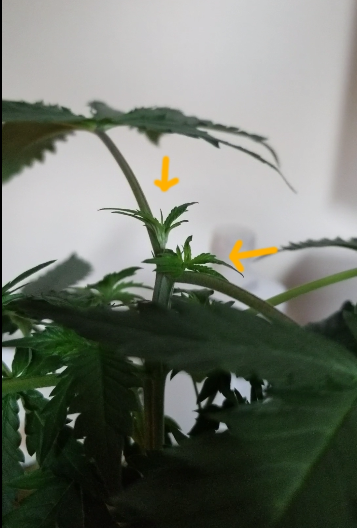- How Topping Can Be Effective
- Topping Step-by-Step
There are several parts to pruning that a cannabis grower can utilize to maximize their yields. One of these several parts is topping cannabis plants. The method also goes by other names such as “FIMing” with minor variations, but that is not the focus of this blog post. The main purpose for topping a cannabis plant is to increase the number of tops at a more equal height. More scientifically speaking, the intention is to redistribute the cannabis plant’s growth hormones. In this blog post we will cover the method of topping rather than FIMing as it is easier to learn and utilize effectively.
How Topping Can Be Effective
The plant growth hormones in question are known as auxins. Auxins are responsible for the growth and development of a plant’s branches, leaves, and roots (Farabee, 2007). Their concentrations are usually highest near the tips of roots and branches, but for cannabis it naturally grows one main stem and slows the growth of the surrounding branches causing them to remain shorter unless the main stem is topped in the vegetative stage. This particular condition is known as apical dominance and it naturally occurs in other plants as well. Unless your goal as a cannabis grower is to grow one main cola per plant, then topping can be very effective in your garden. When the main stem or terminal shoot is cut, the auxin concentration is redistributed to the lower, lateral shoots causing them to grow more equally in height. When topping cannabis plants is done right, the lower branches form the additional tops. In layman’s terms, you are removing the top growth of the cannabis plant in order to promote growth in the side branches.
Topping Step-by-Step
Topping or the removal of the top terminal shoot is typically done in the second week of the vegetative phase and again in the fourth or fifth week of the vegetative phase to maximize number of tops. Ultimately, how and when you top your plant is up to you as long as you cut at the right place on your plant and in the right phase.

Gather the necessary materials to accomplish the job correctly, in an orderly fashion, and in a timely manner. Remember, we are looking to making a single, clean cut on the main stem just above the fifth or sixth node. In order to finish this task you will need:
- Pruning Shears or Razor Blade
- Isopropyl Alcohol (for sterilization)
Once the necessary materials are gathered, sterilize your pruning shears or razor blade with isopropyl alcohol and cut off the stem just above the fifth or sixth node depending on your preference.
After several days you will notice two stalks that grow upwards just below the point where the main stem was cut. Soon they will be vigorous and strong stalks like the main stem.
Conclusion
In conclusion, topping helps maximize the yield of a cannabis plant by increasing the number of stems and evens the canopy which is especially important when plant counts are limited. The process of topping is stressful to any cannabis plant, but it should not hinder their overall health which is why it is a common technique carried out in many commercial and residential cannabis grows. After several days you should notice the plant growing with multiple tops.
Resources
- Farabee, M.J. (2007). “Plant Hormones, Nutrition, and Transport”. Estrella Mountain Community College. Retrieved from https://www2.estrellamountain.edu/faculty/farabee/biobk/BioBookPLANTHORM.html.



Comments powered by Talkyard.